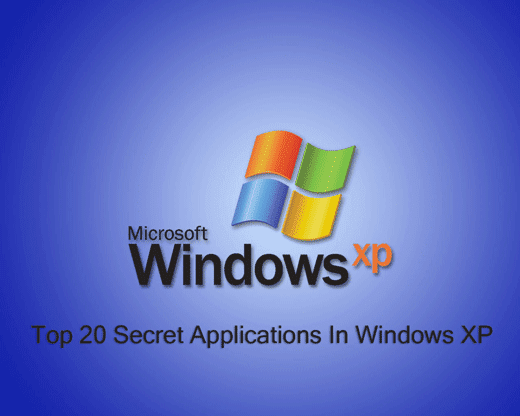
Top 20 Secret Applications In Windows XP
There are some hidden applications in our Windows XP which we mostly don't know. To start these confidential applications you have to type the name of the application in Start Menu > Run. The list of confidential applications in Windows XP are given below:
1. Disk Cleanup = cleanmgr.exe
It is used to clean up disk.
2. Character Map = charmap.exe
It is used to search unusual characters.
3. Dr Watson = drwtsn32.exe
It is used for troubleshooting of the computer.
4. DirectX Diagnosis = dxdiag.exe
It is a very useful feature of Windows XP. It is used for the diagnosis of audio/video cards.
5. IExpress Wizard = iexpress.exe
It is used to create self-extracting / self-installing package. like ZIP files.
6. Clipboard Viewer = clipbrd.exe
It is used to view the content of the Windows clipboard.
7. Windows Media Player 5.1 = mplay32.exe
It is used to open Windows Media Player version 5.1
8. ODBC Data Source Administrator = odbcad32.exe
It is used for database.
9. Object Packager = packager.exe
It is used to insert an object into a specific file.
10. System Configuration Editor = sysedit.exe
It is used to change the system.ini and win.ini.
11. Syskey = syskey.exe
It is used to configure an account on the Windows XP.
12. MICR Soft Telnet Client = telnet.exe
It is used to connect to the internet before there was a browser.
13. Driver Verifier Manager = verifier.exe
It is used for monitoring the drivers present on your Windows XP.
14. Windows for Workgroup chats = winchat.exe
It is used to chat with one another.
15. System Configuration = msconfig.exe
It is used to control the startup applications.
16. System Monitor = perfmon.exe
It is used to monitor your own computer.
17. Program Manager = progman.exe
It is inherited from Windows 3.x desktop shell.
18. Remote Access Phone Book = rasphone.exe
It is a application like the phone book.
19. Registry Editor = regedit.exe
It is used for tweaking and editing Windows registry files.
20. Network Shared Folder Wizard = shrpubw.exe
It is used to create a shared network folder.











0 comments:
Post a Comment